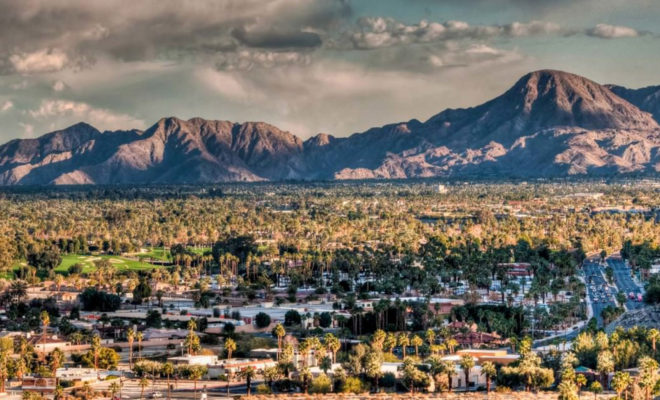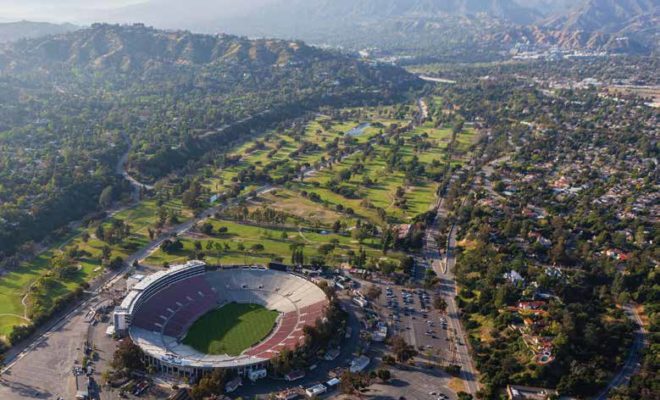Coachella Valley: A Unique Place Posing Unique Challenges for Golf’s Conservation Campaign

The Coachella Valley contains less than 1 percent of Southern California’s population but hosts 28.6 percent of Southern California’s golf courses – an inverse proportion not seen anywhere else in the nation, not even in golf vacation meccas like Myrtle Beach, South Carolina.
Add to that mix the fact that the Coachella Valley is the harshest desert in North America and that we’ve just come off the driest year in recorded history, and you get some idea of the challenge facing the Coachella Valley Golf Industry Water Task Force that Judd Spicer writes about elsewhere in this issue.
There is just nowhere else like Southern California’s lower desert communities of the Coachella Valley when it comes to dealing with water issues; nowhere else where the golf economy is the chief driver of the local economy, nowhere else where so much of the region’s water is dedicated to maintaining golf courses, nowhere else where Mother Nature provides so little water from the sky, nowhere else where it takes so much irrigation to keep turf alive, and nowhere else where the fortunes of the game affect the fortunes of such a high percentage of residents.
Consider another “less than 1 percent” statistic. Golf consumes less than 1 percent of the water consumed statewide, but it uses 24 percent of the water consumed in the Coachella Valley. Golf is but one of many industries that need to reduce usage in order for the state in general and its urban areas in specific to claim victory in the battle to achieve long term water sustainability; however, other than agriculture, golf is THE industry that needs to reduce usage in order for the Water Districts of the Coachella Valley to claim that same victory.
And they do need to “claim that same victory.” The Lower Desert is blessed by one of the richest and deepest aquifers in the state. That along with a generous allocation of Colorado River water is what has made the Coachella Valley bloom. But the river has been declining as a water source for some time, and there is strong evidence that the aquifer has been drawn down by over pumping in recent years.
There is nothing to be alarmed about. Yes, if the Coachella Valley, its water districts and its municipalities continue their current course unabated and undisciplined for years on end, the source of life and commerce in this harsh desert will shrink and die. But they are not continuing along that course; indeed, they began to veer from it long before the current drought. And so did the Coachella Valley golf industry.
“Veering” or shifting course is a good start. But it is not the finish line. To get there, the Desert golf industry has begun to meet monthly with the Coachella Valley Water District (CVWD) to put together a credible plan for meeting the goals of the Coachella Valley Water Management Plan: Reducing water usage 10 percent in the aggregate by 2020; expediting non-potable reuse, and pursuing turf reduction where feasible.
That may sound simple; some have suggested not particularly bold or ambitious. But remember, this place is unique in many more ways than the ones we’ve explored so far – “ways” that make what seems “simple” much harder to achieve than in the wetter coastal areas.
The values of all those homes and condominiums dotting the fairways of so many of the Valley’s golf courses are dependent, literally, on the water that turns all they see in their sight lines green, rendering the simple water saving techniques routinely practiced in other areas of the state – e.g., eliminating roughs from over seeding protocols or removing turf – achievable only at the expense of the thousands who have tied their fortunes to value of their homes, many of them retirement homes.
The Coachella Valley’s golf properties, whether daily fee, resort or private, are dependent on seasonal visitors, snowbirds, tourists and travelers from Los Angeles, Orange and San Diego Counties for an enormous portion of their business. They come to see wall-to-wall green in combination with mild sunny days in the middle of winter. Will they continue to come if the Valley’s golf courses begin to look more like the traditional desert courses of Nevada or Arizona?
And let’s not forget all those real live people in the Desert whose livelihoods are tied to the fortunes of the game. Any coordinated effort to reduce the game’s water footprint that fails to recognize the “quality of life” represented by a minimum level of economic activity consigns those “real live people” to the vagaries and hardships of economic dislocation.
Is the industry up to the task? Yes! Will it be simple? No. Will we get it done while balancing all of the competing equities unique to the Coachella Valley? Absolutely!










